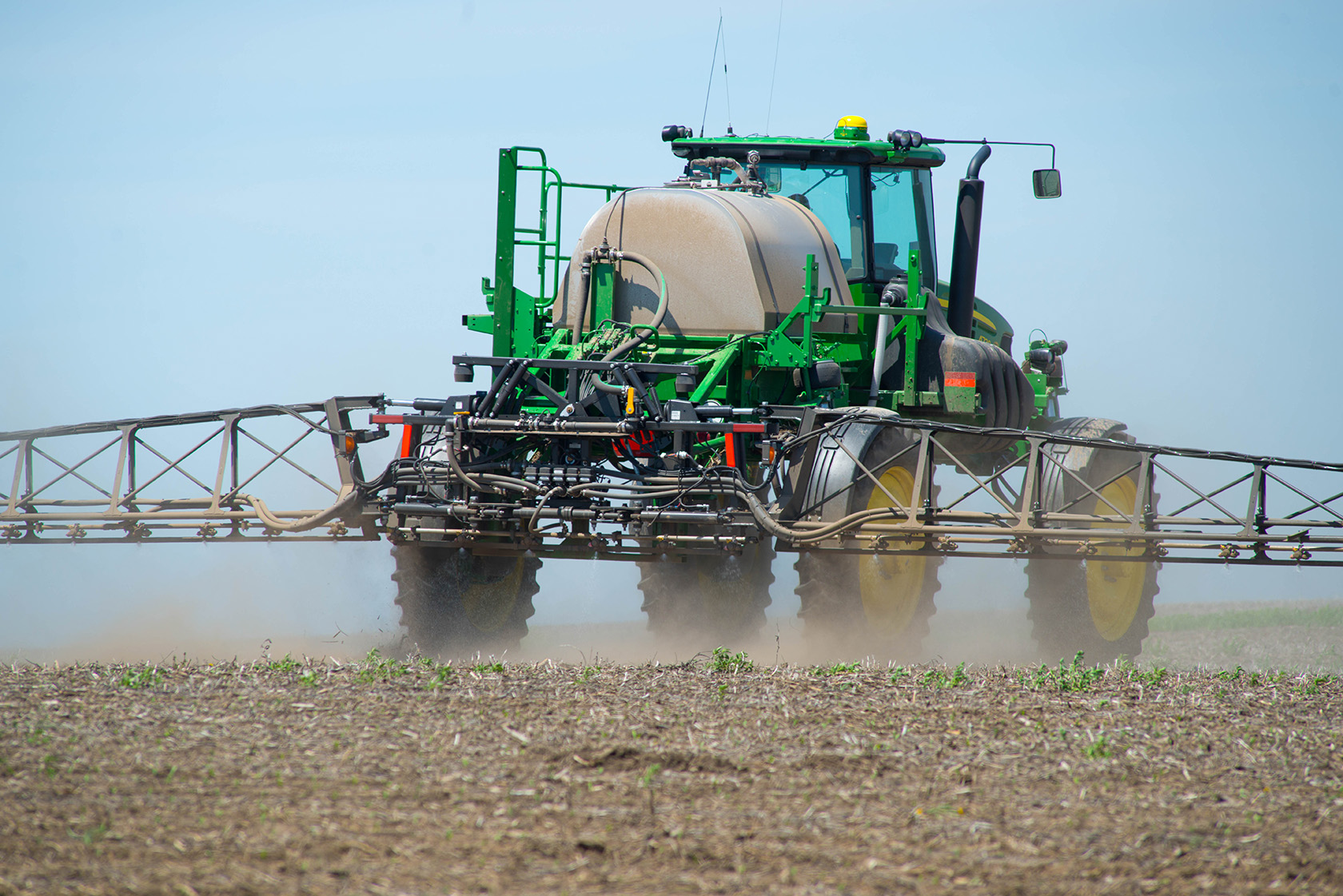
Photo: Iowa Soybean Association
Do biologicals have a place on your farm?
April 7, 2022 | Kriss Nelson
The Iowa Soybean Association’s (ISA) role in the arena of biologicals was the subject of an Innovation TO GO webinar held Tuesday.
Drew Clemmensen, ISA field services program manager, reviewed ISA's work with biologicals, as well as trial results. He also provided opportunities and recommendations for farmers for the 2022 growing season.
Defining biologicals
The ag-retail industry has grouped biologicals into three categories: biofertilizers, biostimulants and biopesticides. ISA has put a focus on researching biofertilizers, the products that help with nutrient usage and effectiveness, Clemmensen says.
ISA’s Research Center for Farming Innovation (RCFI) has tested a wide variety of biological products including SOURCE, ProveN40, Endoprime, Vertex, Envita and Utrisha.
Most of these products are applied in-furrow at planting or foliar-applied later in the spring.
Clemmensen says the trials encompass a range of management practices and yield environments.
The findings of the trials could be surprising to some.
“Nothing really stood out as exceptional one way or another,” Clemmensen says. “Not significantly different results were a trend throughout our biological trials.”
Going forward
RCFI is continuing with biological trials for the 2022 growing season, with an emphasis on two products: Source and iNvigorate.
SOURCE
ISA has partnered with Sound Agriculture to research their foliar spray, SOURCE.
SOURCE has been developed to increase nutrient efficiency by fixing nitrogen and unlocking phosphate throughout the growing season.
Clemmensen says last year, in ISA trials researching SOURCE, the product was applied to soybeans during the reproductive stages. This year, he says they are considering applications at the V3 to V4 growth stage.
“Data from Sound Agriculture has indicated they have seen better results in the early vegetative timing of the soybean, so that will be our focus in 2022,” says Clemmensen.
SOURCE will be used in corn trials as well, with plans to apply it along with a post-application of herbicide at the V4-V5 stage.
Clemmensen says in the corn trials, they will be utilizing Sound Agriculture’s Performance Field Optimizer.
“It is an online tool on Sound Agriculture’s website where farmers can put in their pH, organic matter and cation exchange capacity (CEC) and receive an algorithm that tells if the product is a good fit for their acres,” says Clemmensen. “We will be utilizing the tool for corn trials and placing the trials where the tool says they should be placed.”
iNvigorate
iNvigorate by AMVAC is a liquid, in-furrow product applied at planting that is touted to help with the absorption of macronutrients, increase root growth and have an effect on organic matter levels.
“We are looking to quantify the value of iNvigorate and what effects it has on our commercial nutrients and their availability and rates with those products,” says Clemmensen.
Recommendations when using biologicals
Clemmensen offers some advice to farmers wanting to try biologicals.
Use as part of an integrated system
- Well-managed fields: Biologicals are enhancement products, developed to complement fertilizer programs and you need a good management system in place before you use them.
“They are not key nutrient products that we are using to grow our crops,” he says. “If those core nutrients aren’t there, don’t expect these products to bail you out or show you any kind of return.”
- Tougher environments: Clemmensen says farmers might see some advantages to using biologicals in areas of well-managed fields that will struggle to make nutrients available to the plant.
“This may be an area where those products are going to be effective or at least offer a return on your investment,” he says.
Leave checks and reduce product rates
- Field checks: “Create your own strips. It is the best way to get an honest evaluation,” he says. “If you are planning on doing the whole field, it might mean leaving strips untreated in a couple of different places in the field. If you are skeptical about the product, only have two or three strips using the product.”
- Adjust nutrient rates and use multiple rates in the field: Dropping nitrogen rates, or raising rates, for example, could further help you determine the efficacy of a biological.
“If you put a product out there in a strip and the only variable you have is that product, adjusting nutrient rates could help you determine in the end if the product worked or did not work,” says Clemmensen.
Be prepared to try products over multiple years
Clemmensen says farmers can start introducing biologicals in efforts to build a healthy soil profile, though they should be prepared it make take years to build a system.
“Give those products a chance to build and get a system in place where they start becoming effective,” he says.
Trial participation opportunities
Clemmensen encourages farmers to reach out to the RCFI staff to participate in a trial or would like assistance in conducting their own on-farm research.
"If you have products you are trying and wanting help with a layout or data collection, we are more than interested in helping you learn along with us,” Clemmensen says.
For more information, contact Clemmensen at dclemmensen@iasoybeans.com or call 515 339 4262.
Innovation TO GO Webinars
Hosted by ISA’s Research Center for Farming Innovation (RCFI), the Innovation to Go webinars will be held monthly from March to September. Interested attendees can register here at no participation cost.
Water Monitoring and Quality: May 3, 12-1 p.m. ISA’s water lab analyzed more than 4,100 individual samples for 20 monitoring projects in 2021. Join ISA staff to discuss past results, preview early 2022 data and learn how water monitoring can benefit your operation and stewardship goals.
Farmer Data to Develop More Profitable Crop Management Systems: June 7, 12-1 p.m. Learn about a multi-year project on soybean yield variability across Iowa’s geographic regions, involvement opportunities and outcomes to guide regional management practices to increase profitability.
More webinar opportunities will take place on Jul. 12, Aug. 2, and Sept. 13, with topics announced this spring.
Back